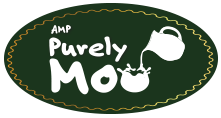Ghee and butter are both derived from cow’s milk and are commonly used in cooking. However, on question is often debated, which one is healthier? Here are all the differences between ghee and butter in terms of production, nutrition, and healthfulness, as well as the risks associated with these products.
Wondering whether to add Ghee or butter to the crispy toast? Learn all about it here. Ghee and are both derived from cow’s milk and are commonly used in cooking. However, on question is often debated, which one is healthier? Here are all the differences between and butter in terms of production, nutrition, and healthfulness, as well as the associated with these products, that everyone should be aware about.
What is Ghee?
Ghee is a form of highly that is traditionally used in . Like butter, ghee is typically made from cow’s milk. Ghee is made by simmering regular butter, allowing it to separate into liquid fats and milk solids. The milk solids are then removed, resulting in a product with less lactose than butter. Ghee has been used as cooking oil, an ingredient in dishes, and in therapies. It is still used in Ayurvedic massage and as a base for herbal ointments to treat burns and rashes.
How is Ghee made?
Ghee is heated for longer than other types of clarified butter, which gives it a stronger and nuttier flavour. It also has a higher burning point than standard clarified butter, making it ideal for frying or sautéing foods. You can make ghee at home using regular unsalted butter. Simply melt the butter slowly, skim off the solids that gather on the surface, and continue to cook the butter until all the milk solids have sunk to the bottom and the liquid is clear. Continue to cook for a few more minutes until the milk solids at the bottom of the pan turn brown. Transfer the liquid into a jar or bottle and let it cool and solidify. The more traditional easy of making Ghee may cost you a little less.
The process starts from buying milk. Boiling it as per use and collecting the cream (Malai) for weeks and then churning butter with it to ultimately make Ghee.
Desi Ghee vs Butter
Because ghee and butter both derive from cow’s milk, their nutritional profiles and fat content are very similar. However, ghee does not contain the same levels of dairy proteins as butter, making it a better option for people who do not tolerate dairy products well.

The nutritional value of Ghee and butter are:
Ghee:
- Calories: 120 kcal
- Total Fat: 14 g
- Saturated Fat: 10 g
- Monounsaturated Fat: 3.5 g Polyunsaturated Fat: 0.5 g
- Cholesterol: 36 mg

The nutritional value of Ghee and butter are:
Butter:
- Calories: 102 kcal
- Total Fat: 11.5 g
- Saturated Fat: 7 g
- Monounsaturated Fat: 3 g
- Polyunsaturated Fat: 0.4 g
- Cholesterol: 31 mg
Can Ghee or butter prevent any disease?
Ghee and butter are both high in saturated fat, which has been associated with an increased risk of heart disease when consumed in excess. However, research published in Journal of Ayurveda and Integrative Medicine suggests that ghee may have certain health benefits and could potentially help prevent certain diseases when consumed in moderation.
A 2018 study conducted in North India found that people who consumed more ghee and less mustard oil had healthier levels of fat and cholesterol in their blood, with lower LDL (bad) cholesterol levels and higher HDL (good) cholesterol levels. Ghee also contains lower levels of milk sugars and proteins, making it a suitable option for those with lactose intolerance. Ghee contains butyrate acid, which plays a role in digestive health and may have antiinflammatory effects. While butter should be consumed in moderation due to its high saturated fat content, ghee may offer some health benefits when included as part of a balanced diet.












